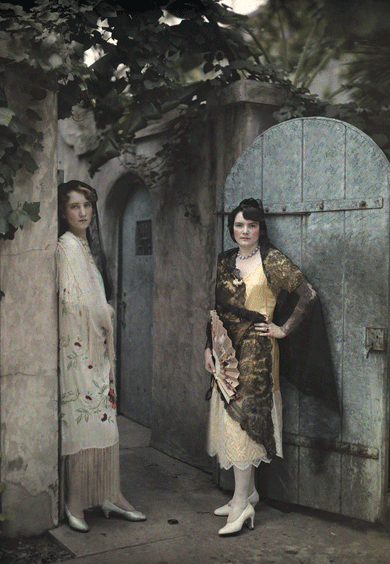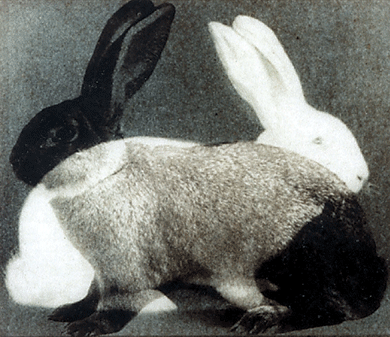Most Americans are familiar with the 1787 compromise that sought to bring North-South equality to Congressional representation by counting slaves as three fifths of a person, or three fifths of a white person — but then, as genetic testing has demonstrated, most Americans are familial to that compromise as well. America’s genetic material is a melting pot of the African, European, and Asian — to say nothing of the Navajo, Cherokee, and Sioux, the country’s original Other.
The three-fifths calculation wasn’t precise, of course, but at least it was simpler than the calculations for deriving the status of an “octoroon” or “quadroon.” In a March 1815 letter, Thomas “All Men Are Created Equal” Jefferson pondered, “What constituted a mulatto by our law?” (That verb — “constituted” — was being used without any irony, presumably.) Jefferson’s answer was to define by exclusion, to solve for the amount of “white” blood one would have to have before passing out of the “mulatto” estate, which he found to be e (one-eighth “Negro” blood) — the result of “q (quarteroon) being ¼ negro blood” crossed with a C, which is expressed as “q/2 + C/2 = or a/8 + A/8 + B/4 + C/2.” (Of the four children Jefferson is suspected of having fathered with his three-quarters-white slave Sally Hemings — children who were seven-eighths white but born slaves — our third president allowed two to escape and freed the other two in his will.)

Two Creole women standing in the doorway to their Uptown home, in New Orleans, Louisiana, in 1929 © NGS Image Collection/The Art Archive at Art Resource, New York City
Allyson Hobbs’s A Chosen Exile: A History of Racial Passing in American Life (Harvard University Press, $29.95) can read like a textbook thanks to the evil equations of the Founding Fathers, the antistyle of its academic prose, and the countless annotations. But in history this vital, the colorless surface of the writing is beside the point. “Passing is difficult to recover in conventional sources given that its purpose was to leave no trace,” Hobbs tells us, and so A Chosen Exile examines judgments of supposed genotype by phenotype — by eye, ear, and economic condition — by writers such as Charles Chesnutt and Jean Toomer, and by the uneducated and even nameless. The book is an admirable effort to catalogue the myriad classifications of race in America, to develop a taxonomy of biases that endure even as the country’s complexion changes. (Self-identifying non-whites now make up nearly 30 percent of the American population; at the turn of the twentieth century — though the identification was not always self-reported — that number was closer to 15 percent.)
The term “passing” seems to come from the passes that slaves had to carry, which allowed them to visit their relations on other plantations, as well as from the passes that identified their owners when duties took the slaves off their plantations or when they were rented out for day labor. A literate slave, then, was a dangerous slave, not least because he — if literate, he was usually a he — could forge papers permitting a broader range of motion, and could also forge papers that identified their bearers as free. Hobbs’s history is addressed to the implied tautology: If ancestral descent isn’t immediately apparent and requires a piece of paper — a census, a constitution’s fractions — for its establishment, then what does race even mean?
Another piece of paper that features prominently in Hobbs’s text is the train ticket, and prominent among her many fascinating characters is Homer Plessy, the Creole (seven-eighths white) New Orleanian cobbler who challenged Louisiana’s segregated railroad system in 1892. By 1896, Plessy’s case had been shunted to the Supreme Court, and his lawyer, Albion (a perfect appellation for an official Caucasian) Tourgée, was arguing that being denied a seat in a white car was a de facto denial of his client’s “inheritance.” Whiteness, in Tourgée’s terms, had “an actual pecuniary value”; to be compelled into a separate car was to be owed damages. The court disagreed, though, and upheld segregation — specifically the semantic chicanery of “separate but equal.” Hobbs notes that the one dissenting voice on the Court belonged to Justice John Marshall Harlan, the son of a Kentucky slave-owning family, whose fair-skinned half-brother, Robert, had been freed by their father at thirty-two.
Neither Plessy nor Robert Harlan — who went on to work for the Treasury Department — tried to pass as white, but a number of Hobbs’s other subjects did. If whiteness, in Hobbs’s reading, initially meant liberation from oppression, it later meant a severance from community and folkways. The most poignant parts of A Chosen Exile are its biographies of the unknown or underknown: Elsie Roxborough, who moved from Ann Arbor (where she was a star student at the University of Michigan) and Detroit (where she was a nightlife doyenne who enchanted, and briefly dated, Joe Louis and Langston Hughes) to New York to live as white (until her apparent suicide); P.B.S. Pinchback, a newspaper publisher and professional gambler whose racial ambiguity enabled him to win the governorship of Louisiana, which position he held for all of thirty-five days; and, furthest back in time, Ellen Craft, a light-complexioned former slave from Georgia, who, because it would have been unconventional for a white woman to travel alone with a male slave, and because her husband’s complexion was dark, disguised herself as a white man and pretended to own her husband, ferrying him a thousand miles north to Quaker Pennsylvania and so to freedom.
After the Civil War, when African Americans moved north and into the cities, racial typologies and anti-miscegenation legislation grew stricter, culminating in Virginia’s Racial Integrity Act of 1924, whose infamous proviso was the so-called one-drop rule, which minoritized anyone with any non-white ancestry whatsoever and forbade them to marry a truly “white” person. In the same year, Virginia passed the Eugenical Sterilization Act, which was intended to mark out citizens — those deemed to be afflicted by “idiocy, imbecility, feeble-mindedness or epilepsy” — for reproductive regulation. (Virginia performed more than 7,000 salpingectomies and vasectomies under the law.)
Scientific racism, or eugenics, provides the subplot of the quest for a safe, foolproof, female-administered contraceptive, and too the subplot of Jonathan Eig’s The Birth of the Pill: How Four Crusaders Reinvented Sex and Launched a Revolution (W. W. Norton, $27.95). Eig’s tetrarchy includes Margaret Sanger, the saintly founder of the American Birth Control League (which evolved into Planned Parenthood), who, toward the loose-screw end of her life, just after the Second World War, found herself aligned with eugenicist associations; Katharine McCormick, an MIT-trained biologist, suffragist, diaphragm advocate, and heir to the McCormick agricultural-equipment fortune; Gregory Goodwin “Goody” Pincus, “perhaps the world’s leading expert in mammalian reproduction,” who, after he was let go from Harvard (possibly for being too PR-friendly, or too Jewish), founded the Worcester Foundation for Experimental Biology in Massachusetts, an independent research facility situated in a ramshackle old-ladies’ home that eventually doubled as his residence; and John Rock, a staid Catholic obstetrician in Boston.
In the winter of 1950 — when Sanger first presented Pincus with the idea for an innovative, gynocentric form of contraception, and McCormick offered funding — preventing pregnancy was a matter of condoms (the latex variety was popularized by the U.S. Army when it distributed prophylactics to GIs in Europe) or various foams, gels, unguents, and douches (including, according to Eig, Lysol, which contained the spermicidal chemical cresol). It was Pincus’s theory that the ovulation cycle might be regulated by administering the hormone progesterone, which a woman’s body releases naturally once an egg is fertilized. Pincus hypothesized that an artificial elevation of progesterone levels would convince a body that it was pregnant and prevent an egg from being released. Along with his partners, Hudson Hoagland and M. C. Chang, Pincus proved this theory through experimentation on rabbits (which mated like rabbits) and rats (which mated up to five hundred times in six hours). Then they set about determining the best delivery system, which turned out to be oral — a tablet. That’s when John Rock became involved; he tested the pill on his patients, who were predominantly Catholic women in their twenties and thirties whose bodies were victims of the Church’s ban on prophylactics and the rhythm method. The birth-control pill — originally released as Enovid (hear the “ovum,” but also see the anagrammatical “void”) — was later tested on a larger human sample group in Puerto Rico, an American protectorate rife with women whose poverty and race made them ideal subjects for a drug whose side effects were still mysterious.
Before the debut of “Papa Pincus’s Pink Pills for Planned Parenthood,” Pincus — who never patented and never profited from his invention — had experimented with “perfusion,” the process of obtaining hormones from mammal innards (a less barbaric source for progesterone was a Mexican plant called Cabeza de Negro, “the Negro’s head”). That ignoble extraction procedure inaugurates The Hormone Factory (Other Press, $17.95), a novel by Saskia Goldschmidt, translated from the Dutch by Hester Velmans. The novel’s protagonist, Mordechai de Paauw, is a nymphomaniacal Netherlandish assimilated Jew who’d dreamed of studying chemistry until being forced into the family business, the De Paauw Slaughterhouse and Meatpacking Co. Surrounded by cows and even treyf pigs being stripped into beef and pork, he finds a way to engage with his primary vocation by “discovering the hidden uses of organs”:
My hunch was confirmed by a breakthrough then being made in the pharmaceutical field. Two Canadians — a physician and one of his students (I’m telling you, not even an experienced scientist; no, a mere medical student) — had succeeded in isolating a substance in the pancreas, insulin, which was found capable of combating diabetes, a disease commonly resulting in a fatal coma. This substance was extracted from the pancreas, which got dumped by the ton on our plant’s refuse heap each and every day. What a game changer that was. When I heard about it, I walked outside and just stood there staring at the colossal mountain of offal in our factory yard. . . . All we had to do was plumb the secrets of the animal organs, and beat the world’s many other treasure hunters to it. There, standing at the foot of that mountain of slime, I cursed my father’s shortsightedness. If only he hadn’t prevented me from learning to ferret out the secrets of those bloody body parts myself!

“Nach der Natur / After Nature, T3,” by Rémy Markowitsch. Courtesy the artist and Galerie EIGEN + ART, Leipzig
Given that the setting is Amsterdam in 1923, all that stands between Mordechai and multinational success is a stock-market crash, a recession, a bad translation (“What a game changer that was”), and the wholesale murder of European Jewry. In the company of his less commercially and sexually adventurous twin brother, Aaron, and a Prussian Jewish scientist and refugee named Rafaël Levine, Mordechai founds a company called Farmacon, dedicated “to produc[ing] medicines that hadn’t yet been invented.” It becomes, after Hitler’s seizure of the chancellorship, a haven for “the very top echelon of Europe’s scientific establishment.”
In the novel, the two real Canadians who extracted insulin (Frederick Banting and J.J.R. Macleod) go to Stockholm for the Nobel, while the de Paauw clan, apparently not entirely fictional, stumbles on Preparation 288 — “the rutting hormone,” or testosterone, drawn from bovine-testicle extract. Two decades on, they meet extermination by gas in the human slaughterhouses of Nazi Poland — at least, Aaron does. The Hormone Factory is a bizarre bloody muddle, but the first-person slang makes it difficult to tell whether the problem is translational or primal. Foreign literature in English is rarely black or white, and the difference between satire and stereotype is often a single beat, a single drop.














































































































